Beetroot, Beta vulgaris, is a biennial herbaceous plant in the family Chenopodiaceae, and it is grown for its edible root. The plant usually stands with a long central root and has a rosette of leaves growing on the stem. The leaves are oval, arranged alternately on the stem, and grow 20–40 cm (7.9–15.7 inches) in length. The roots are usually red. Beetroot is easy to grow, takes up little space, and is excellent for beginners. Below are the 18 steps/ways to boost Beetroot yield below.
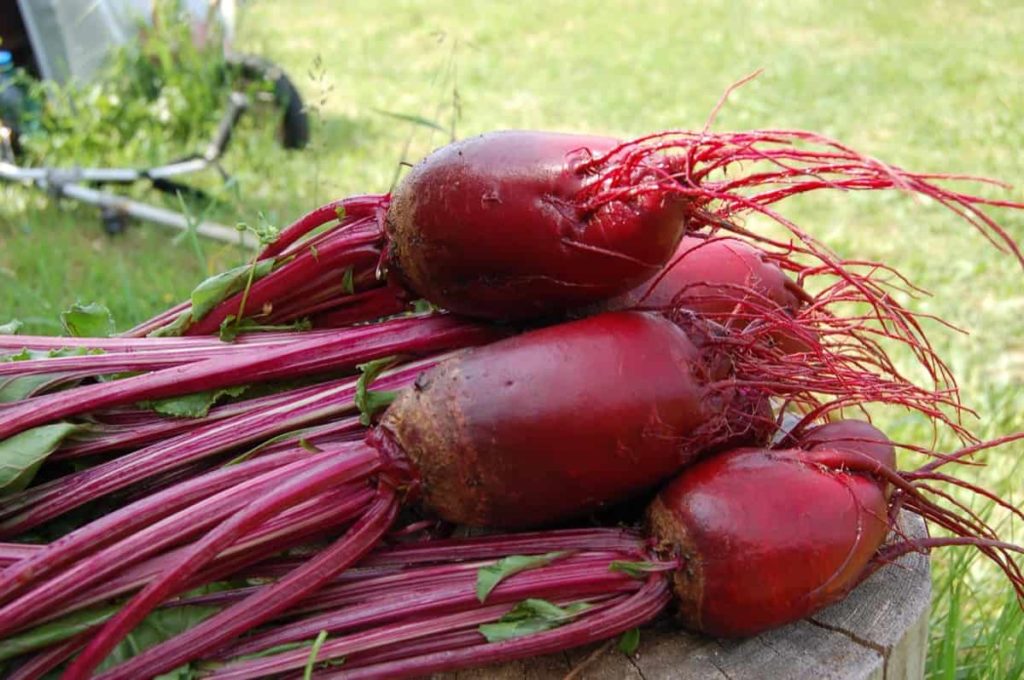
18 Steps/ways to boost Beetroot yield
Step 1: Best methods for Beetroot plants can increase your productivity
Beetroot needs to be grown quickly for the best taste, and it should be picked when it is small enough and freshly cooked. Beetroot is a very simple vegetable that suffers from very few pests and diseases. The best way to grow Beets is with good loose, fertile soil that adds a lot of decomposed organic matter.
Beetroot prefers a place in full sun. Improve the soil by digging in well-decomposed manure – avoid fertilizers and other fresh soil improvers as they can cause bolting (going to seed early) or proper root development. Remove any large rocks and any part of the soil as they can affect the excellent growth of the roots. Beets can also be easily grown in containers – provided they are deep enough.
Step 2: High yield varieties of Beets
There are different types of Beets, and each has its unique characteristics. Most of them are grown for their Beetroot, which comes in different sizes, shapes, and colors. Some popular types of Beetroot include Formanova, Lutz Greenleaf, Chioggia, Golden, Merlin, and Detroit Dark Red.
Seed variety: Choose a hybrid seed type readily available at the local nursery or garden center. Boltardy-type Beets are best for sowing seeds in pots. Hybrid varieties often lead to higher yields, tastier fruits, and faster growth. Some improved types of Beets are;
- Early Wonder: This type of Beet is flat and smooth. Its leaves are green, and its roots are red. It takes 55 to 60 days for the crop to be ready.
- Crimson Globe: This is one of the highest-yielding varieties. This type of Beet is flat and dark red. Its pulp is also red.
- Detroit Dark Red: This type of Beetroot is dark red. The leaves of the plant are green and long. Farmers can get higher yields by cultivating this type.
- Misra’s Crosby: This type of fruit is dark red to purple. This variety takes 55 to 60 days to ripen.
In case you missed it: Growing Organic Beetroot – Planting, Tips, Ideas
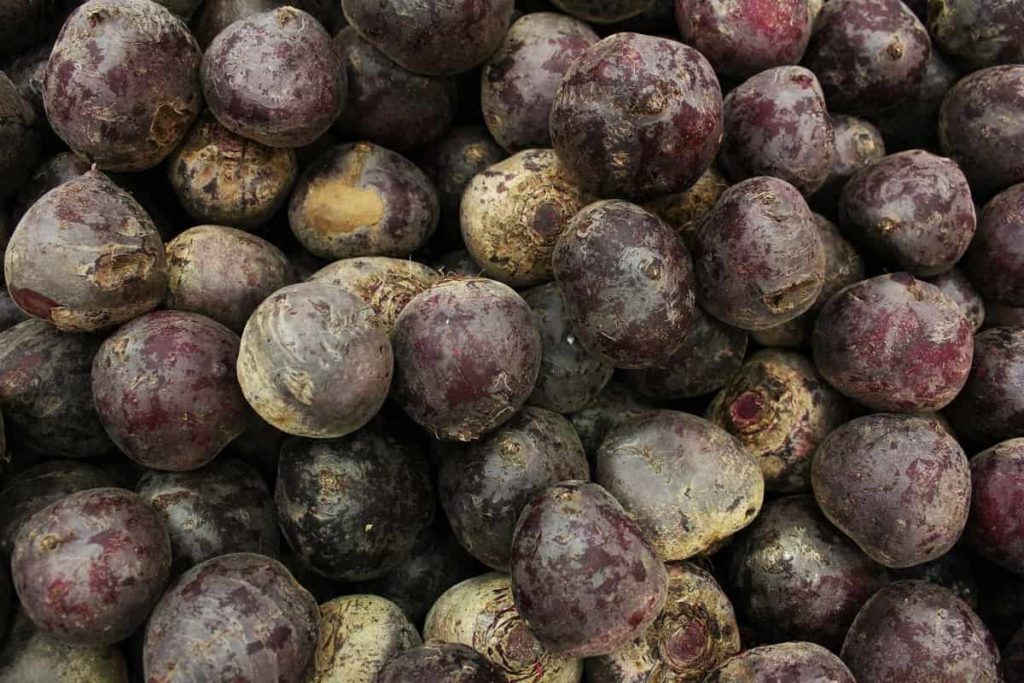
Step 3: Soil condition for getting higher yields, tastier Beetroots
Beetroot, such as carrots, radishes, and other root crops, require loose soil to grow. If the soil is compact or contains rocks or other debris, it can hinder the root growth or damage them. Before planting, ensure the soil you are planting is loose and free of obstructions.
Deep, well-drained loamy soil or sandy looms are best for Beetroot production. Heavy clay reduces soil germination due to the formation of the soil layer after rains. The roots may be in the wrong shape and will not grow in heavy soils. Beetroot is sensitive to soil acidity and has an ideal pH of six to seven. Beetroot can be grown successfully in saline soils.
Step 4: Land preparation best for Beetroot production
For Beet cultivation, it is necessary to loosen the soil in a good field by plowing it well. A very important part of soil preparation is the removal of nuts. It is advisable to dig the ground to a depth of 15 to 20 cm to ensure that the enslaved people are removed. Another important aspect of Beet cultivation is the soil surface. The soil has a good crumb structure, is sufficiently moist, and is free of plant rot.
The last plow should be well-fertilized. Making smooth beds or ridges and furrows is important as part of land preparation. Abundant water is essential for seed germination. Water the plant daily for growth. Avoid over-watering as it can produce more leaves and reduce the size of the roots. After the plants ripen, water them every 10-14 days. The best temperature for growing seeds is 10°C.
Step 5: Seed rate and seed treatment for better growth
For Beetroot growth, use 40,000 plants per acre of land. Use only one plant per hill. Seeds are treated with Carbendazim 50 WP or Thiram by 2 g/ kg before sowing.
Step 6: Fertilizers for getting more crop yield
As Beets grow in rich soils, you must feed them well throughout life. But there is a difference between dressing your Beetroot with chemical fertilizers and organic matter. Experienced gardeners know that sweet Beets are produced from organic fertilizers, aged manure, and homemade fertilizers. So, avoid chemical fertilizers and use organic.
In case you missed it: Beetroot Cultivation Income, Yield, Profit, Project Report
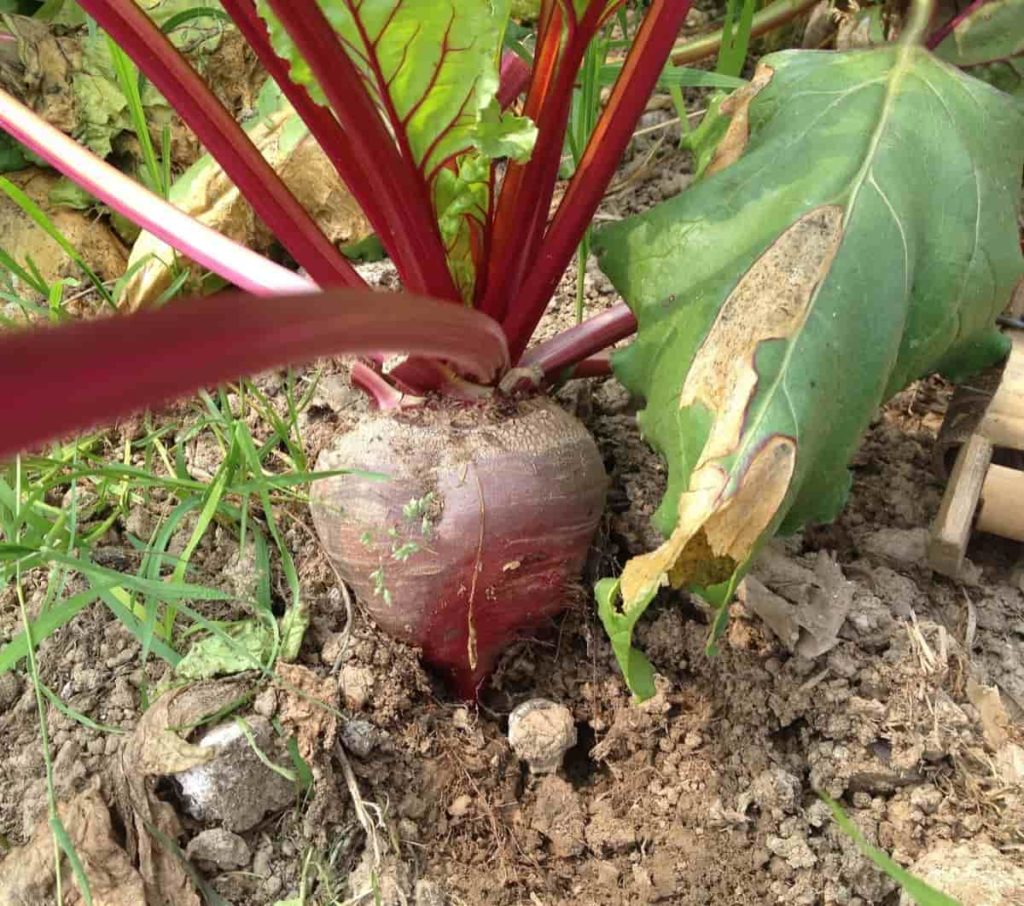
Boron is necessary for feeding Beetroot plants. Low levels of boron cause dark spots on the roots and in them. Internal black spots can be prevented with 1 ounce of borax per 100 square feet (14 grams per 9.5 square meters). Excess boron is harmful to some other food crops, so a soil test is necessary to determine if borax is needed.
Keep the Beetroot plants well moisturized, especially during fertilization. It will help get the nutrients into the soil where the roots can use them. To avoid weeds, plant Beetroot around the Beetroot plants and harvest the Beets when they are the size you want. Store Beets in a cool place for several weeks, or you can make pickles to store longer.
Step 7: Companion planting to increase productivity
Companion planting is planting different crops to pollinate, control pests, and increase productivity. You can prefer Beets with Onions, Lettuce, Cabbage, and Dwarf Beans.
Step 8: Symptoms of Beetroot leaves are turning yellow
Yellow color leaves may be the first sign of trouble with your Beetroot plants. It is essential to understand what can cause your Beet leaves to turn yellow to prevent the problem from spreading before it causes damage or failure to the plant. One possible condition that can cause Beet leaves to turn yellow is malnutrition. Plants that do not have enough sulfur can change their leaves of the plant from green to yellow.
Test your soil for sulfur levels. Or it could be that plants have a disease or you are dealing with a simple matter of pests. Pests and diseases go hand in hand because many pests cause your plants to become infected. But this does not mean that all insects cause disease. Some types of insects are good for your plants. Abnormal growth, pest infestation, and plant disease are just a few reasons your Beet leaves may turn yellow.
To properly maintain the health of your Beetroot plants, you need to know how to identify these problems, treat them and prevent them from spoiling. Excessive watering of Beetroot plants can cause yellow leaves – it is also important to ensure that your Beetroot plants are not being watered too much. It can happen during rainy seasons or in a garden with poor drainage. Overwatering can make Beetroot plants and leaves yellow, droopy, or sagging.
Tips to prevent your Beetroot plants from over-watering:
- Water your Beetroot plants during daylight hours, and it is best in the morning to let the soil dry out a bit during the day.
- Check for proper drainage.
- Water Beet is based on plants, not leaves.
- Do not water your Beets if the soil is moist, wet, or puddle.
Step 9: Symptoms of deformed Beets and their control
Sometimes Beets are spoiled due to being too small, shady, or overcrowded. Aim for at least five hours a day in the sun for the best quality. Beetroot prefers sandy, light soil that grows well. The best method to deal with problems with Beetroot roots is to provide proper growth conditions. Even if these conditions are met, Beetroot problems can still occur. Don’t let it affect the enjoyment of your crops anyway. If all else fails and you leave yourself with small or deformed Beets, you can always cut the leafy tops for the vegetables.
Step 10: Beets are growing very slowly and are not growing
The soil is very acidic – Your Beetroot plants may not be growing because the soil is very acidic. Beetroot plants generally prefer a soil pH between 6.5 and 7.5. Soil acidity can affect Beetroot growth. Inspect the soil where Beets are being grown. If you find that it is very acidic, then there are some ways to neutralize the pH of the soil. One way is to add limestone to the soil mixture.
Step 11: Beetroot propagation for more yield
Beetroot is grown mostly through seeds. Beetroot seeds are sown at a depth of about 1.5 to 2 cm. There should be a distance of at least 35 cm between each row. Most farming begins between mid-April and mid-July, however, depending on the different climatic conditions in these areas.
Continuous watering is essential for the efficient and effective cultivation of Beetroot. It takes about 15 days for plants to appear on the ground. When the Beet plants reach a height of about 4 cm, thinning is required, i.e., removing the weak plant and maintaining a distance of 8 to 10 cm between each plant.
In case you missed it: Growing Beetroot In Containers Information
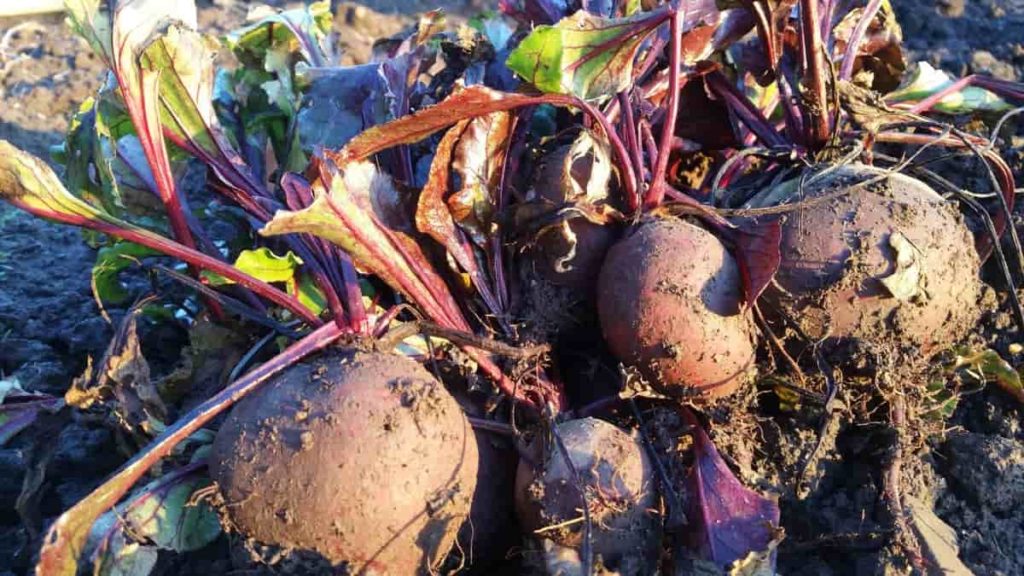
Step 12: Pests control for getting more Beetroot yield
Your Beetroot plants are probably not growing because they never got a chance to start. Many garden insects enjoy feeding on Beetroot plants, such as fly Beetles, aphids, and cabbage loopers. Some insects will eat Beetroot plants, while others will eat the leaves.
Since you are likely to eat Beets once they are ready to be harvested, it is important to use natural remedies to ensure that the vegetables are not contaminated with harmful toxins. There are many pest control methods for Beetroot plants; however, the method you choose will depend on the type of pest you are eradicating.
Step 13: General care and maintenance for maximum growth
Beetroot needs enough moisture for optimal growth. Even watering will promote the growth of good quality roots and prevent ring formation in the roots. Soil moisture can be preserved by applying mulch around the plants. In addition to moisture, Beets also need a proper supply of nutrients, especially phosphorus. Apply complete fertilizer to the plant to ensure maximum growth. Lightly cultivate and remove weeds around the plant so as not to damage the developing roots.
Step 14: Beetroot planting and spacing for getting more yield
- Beets are grown from a small pea-sized cluster of seeds. Each cluster contains many small true seeds. Soak the clusters of seeds for 12 hours before sowing to help germination.
- Sow clusters 1 inch (2.5 cm) deep and 1 inch apart. Badges can be broadcast. Spread the seeds lightly on a bed 15 to 18 inches (38-45 cm).
- The seeds will need to be thinned. The plants will grow in clusters. Use small scissors to thin, successful plants to 4 to 6 inches (10-15 cm) when they are 3 inches high. Alternatively, you can gently separate the young plants and place the different plants in a nearby row.
- Space rows are 12 to 18 inches (30-45 cm) apart. Add thin herbs to salads. Beets usually do not transplant well.
- Starting Beet Seeds Indoors: If you start seeds indoors, plant a seed flag per petal pot and thin plants for a plant when the first true leaves emerge.
- Planting Transplants: Beetroot seeds will not germinate in heavy soils, so transplants are a better choice. Set each plant to the desired spacing.
In case you missed it: Beetroot Farming, Planting, Care, Harvesting – A Full Guide
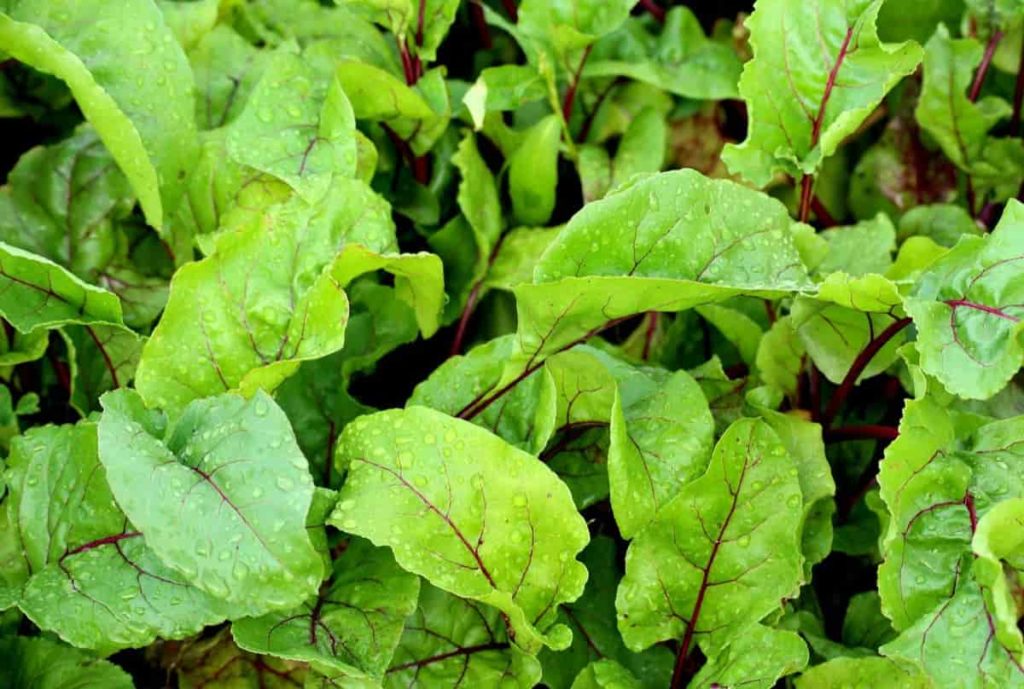
Step 15: Some common problems and their control in Beetroot plants
Beetroot faces some common problems: poor growth, colorless leaves, insect infestation, disease, and abnormal growth. Some of these problems are more troubling than the danger to your plants. Other problems need to destroy the plants.
Insects will not grow when a plant is stressed because it is in a survival mode. Insects, such as aphids and flea beetles, can damage leaves to such an extent that it affects Beet growth. Similarly, diseases like Cercospora leaf spot can put stress on Beetroot plants, as a result of which beetroots will become smaller than they are. Aphids cause the leaves to bend and new shoots to deformed, resulting in reduced root production. Try to prevent aphids from invading insects such as hoverflies and ladybirds that feed on them.
Leaf spot appears as brown spots on leaves after Beetroot. A light central area of the spot may fall. The effect on crop yields is not serious, although the leaves look badly damaged. Remove and destroy severely diseased leaves. Practicing crop rotation will help prevent the disease. Apply a balanced fertilizer two weeks before sowing.
Step 16: Water management for better plant development
Irrigation should be done first after sowing. In the summer season, irrigation is done every 6-7 days; irrigation is given only when required in the rainy season. A total of 8-9 irrigations are required. Connect the drip system to the main and sub-main pipes and place the inline lateral tubes at 1.5 meters intervals. Place the drippers in the lateral tubes at 60 and 50 cm intervals. Make raised beds 120 cm wide at 30 cm intervals and place a lateral in the center of each bed.
Step 17: Beetroot harvesting tips for increasing yield
Young Beet greens can be cut for salads when they are 2.5–5.0 cm (1–2 inches) tall and old before reaching 15 cm (6 inches) in length. The roots are ready for pruning when they reach 2.5 cm (1 inch) in diameter and are the softest before reaching more than 7.5–10 cm (3–4 inches). Watering the soil, the day before harvesting Beetroot makes it easier to pull the Beets.
In case you missed it: How to Grow Grafted Vegetable Plants: Benefits, and Suitable Vegetables
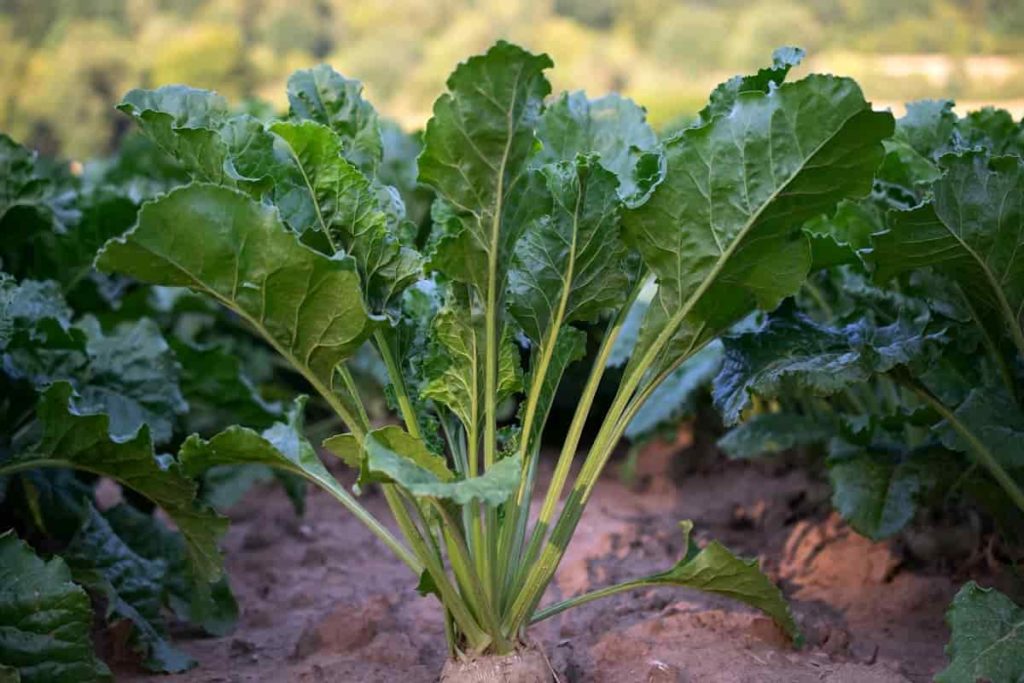
After that, pull the Beetroot out of the soil by holding the top firmly and pulling the root out of the soil vertically. Alternatively, use a garden fork to remove the Beets from the soil. Before storing the root, cut the Beet tops 1.25–2.5 cm (0.5–1.0 inches) above the root. It helps keep the Beets fresh.
Beets should be ready for harvest 7 to 8 weeks after planting. Young, tender tops are often of light quality, but vegetables can be used until they come in strong flavors. Young plants can be cooked together with the root and top or use the root alone when it is the size of a golf ball or larger.
Step 18: Beetroot yield per hectare
The average yield of Beetroot is 20-25 tons per hectare. The crops need cold, humid weather to produce more. Proper management, care, and exercise practices on the farm lead to higher Beetroot yields.
- Economical Aquaculture: A Guide to Low-Budget Fish Farming
- 15 Common Planting Errors That Can Doom Your Fruit Trees
- How to Make Houseplants Bushy: Effective Tips and Ideas
- Innovative Strategies for Boosting Coconut Pollination and Yield
- Pollination Strategies for Maximum Pumpkin Yield
- The Complete Guide to Chicken Fattening: Strategies for Maximum Growth
- Natural Solutions for Tulip Problems: 100% Effective Remedies for Leaf and Bulb-Related Issues
- Revolutionizing Citrus Preservation: Towards a Healthier, Greener Future
- Natural Solutions for Peony Leaf and Flower Problems: 100% Effective Remedies
- Maximizing Profits with Avocado Contract Farming in India: A Comprehensive Guide
- Natural Solutions for Hydrangea Problems: 100% Effective Remedies for Leaf and Flowers
- The Ultimate Guide to Choosing the Perfect Foliage Friend: Bringing Life Indoors
- From Sunlight to Sustainability: 15 Ways to Use Solar Technology in Agriculture
- The Ultimate Guide to Dong Tao Chicken: Exploring from History to Raising
- The Eco-Friendly Makeover: How to Convert Your Unused Swimming Pool into a Fish Pond
- Mastering the Art of Delaware Chicken Farming: Essentials for Healthy Backyard Flocks
- 20 Best Homemade Fertilizers for Money Plant: DIY Recipes and Application Methods
- How to Craft a Comprehensive Free-Range Chicken Farming Business Plan
- Brighten Your Flock: Raising Easter Egger Chickens for Beauty and Bounty
- How to Optimize Your Poultry Egg Farm Business Plan with These Strategies
- Subsidy for Spirulina Cultivation: How Indian Government Schemes Encouraging Spirulina Farmers
- Ultimate Guide to Raising Dominique Chickens: Breeding, Feeding, Egg-Production, and Care
- Mastering the Art of Raising Jersey Giant Chickens: Care, Feeding, and More
- Ultimate Guide to Raising Legbar Chickens: Breeding, Farming Practices, Diet, Egg-Production
- How to Raise Welsummer Chickens: A Comprehensive Guide for Beginners
- How to Protect Indoor Plants in Winter: A Comprehensive Guide
- Ultimate Guide to Grow Bag Gardening: Tips, Tricks, and Planting Ideas for Urban Gardeners
- Guide to Lotus Cultivation: How to Propagate, Plant, Grow, Care, Cost, and Profit
- Agriculture Drone Subsidy Scheme: Government Kisan Subsidy, License, and How to Apply Online
- Ultimate Guide to Raising Araucana Chickens: Breed Profile, Farming Economics, Diet, and Care
- Bringing Hydroponics to Classroom: Importance, Benefits of Learning for School Students
- Ultimate Guide to Raising Polish Chickens: Breed Profile, Farming Economics, Diet, and Care
- Ultimate Guide to Raising Australorp Chickens: Profile, Farming Economics, Egg Production, Diet, and Care
- Silkie Chicken Farming: Raising Practices, Varieties, Egg Production, Diet, and Care
- Sussex Chicken Farming: Raising Practices, Varieties, Egg Production, Diet and Care
- Homemade Feed Formulations for Livestock: Discover Cost-effective Starter to Finisher Feed Recipes